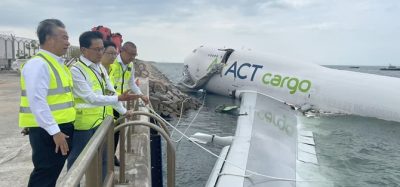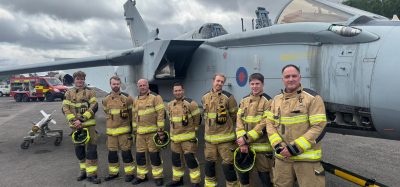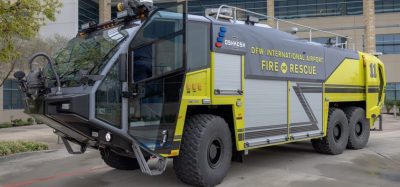Aircraft rescue fire fighting history
Posted: 3 April 2007 | Marc Tonnacliff, ARFF Specialist, Federal Aviation Administration (FAA) | No comments yet
Since the early existence of man and the advent of fire, there has been a need for fire prevention and fire control. Fire fighting has an established history dating back to the ancient times of our ancestors. We have evolved from bucket brigades to horse drawn pumpers to highly sophisticated vehicles with computerised equipment for agent application. Fire fighting has grown from your local volunteer to the one of the most highly sought after and professional careers today. With so much interest in the fire service and the fire fighters ability to protect and serve the community, there has become a need to have a set of standards. The standards were put in place to provide for and protect the firefighters laying their lives on the line with every call they answer.
Since the early existence of man and the advent of fire, there has been a need for fire prevention and fire control. Fire fighting has an established history dating back to the ancient times of our ancestors. We have evolved from bucket brigades to horse drawn pumpers to highly sophisticated vehicles with computerised equipment for agent application. Fire fighting has grown from your local volunteer to the one of the most highly sought after and professional careers today. With so much interest in the fire service and the fire fighters ability to protect and serve the community, there has become a need to have a set of standards. The standards were put in place to provide for and protect the firefighters laying their lives on the line with every call they answer.
With the introduction of flight by Orville and Wilbur Wright, the way in which people travel was about to change. With the on set of the first scheduled airline flights was around 1914, it was only a matter of time before larger and more powerful planes took to the skies.
As with any large industry, the government felt there was a need for it to regulate it to better serve the people. The FAA was established as a federal agency in 1958 to regulate air commerce and became part of the Department of Transportation in 1967. Within the FAA, the Office of Airport Safety and Operations is the division that is responsible for the regulation and inspection of 14 Code of Federal Regulation (CFR) 139 airports, which includes inspection of the Aircraft Rescue Fire Fighting departments.
Join us live: Shaping the Next Generation of Hold Baggage and Air Cargo Screening
Join us live for an insightful webinar on 11th December at 14:00 GMT, in collaboration with Smiths Detection, as we explore the strategic balance of operational efficiency, regulatory compliance, and sustainability in high-volume security environments.
This session offers a focused look into future-proofing your security strategy.
Key learning points
- Cost Reduction: Strategies to minimize bag travel time while simultaneously reducing operational costs.
- Regulatory Roadmap: Insights into the next wave of regulatory changes and their impact on future investment decisions.
- Sustainable Systems: Practical approaches to building sustainability into security systems and lowering the total cost of ownership (TCO).
- Scalable Solutions: Real-world examples of scalable systems supporting current airport growth and preparing for tomorrow.
Register now for expert insights, case studies, and actionable strategies on operational efficiency!
As with many things, there is a minimum standard which is required to be met. The standards set forth by the FAA through Advisory Circulars were developed through extensive research, the study of the fire fighting as an industry, the fire fighting equipment available, National Fire Protection Association standards and a comprehensive test program conducted in 1967 with 32 different airports. The standards were originally proposed in CFR 139.49, which was used to identify and divide the airports into five different categories according to size, and identified by an “index” rating. The length of the aircraft, which corresponded with the number of passengers, which could potentially be on an airplane, was used to determine the index rating. Airports are rated Index A – E, with A being the smallest and E being the largest. In addition to the length of the plane, the average number of scheduled flights for that aircraft was also taken into affect to help determine the index. This is somewhat different from the International Civil Aviation Organization (ICAO) and NFPA who use a classification of one through 10 to determine the size of the airport.
Throughout time, the FAA has implemented several supplemental documents called Advisory Circulars, which provide further guidance for dealing with a broad variety of topics. One topic is the amount of fire protection required to maintain the index of the airport. One area where the FAA has not become involved though is manning levels. This is a very hot topic among all the ARFF departments, but the FAA has left manning up to the determination of the Airport Operator. The FAA has specified the amount of time when responding to an aircraft emergency though. Originally, all ARFF vehicles used to support the index of the airport were required to respond within 3 minutes to the emergency. Over the next several years and additional research, in 1972 came the final ruling, the ARFF departments are required to have their first vehicle arrive at the incident within three minutes, the second vehicle (if required for index rating) to arrive in four minutes, and any remaining vehicles, in four and a half minutes. In 1988 CFR 139 was amended to reflect a final change in response time to what it is currently used today, three minutes for the first vehicle and 4 minutes for the rest of the responding vehicles.
Aircraft fire fighting has evolved extensively over the years. Airport fire fighters are sworn professional firefighters dedicated to mission accomplishment; saving lives and protecting property. Their mission, while similar in nature to that of a structural fire department (putting the wet stuff on the red stuff) is very different do to the types of fires, materials encountered (composite fibers, aviation fuel, oils, etc.) and is highly technical in nature. What does it take to be an Aircraft Rescue Fire Fighter? It takes physical strength, nerves of steel and dedication to their mission, the ability to stare danger in the face, remain calm, and the ability to remain levelheaded under trying times of extreme stress. You are a highly trained, well-tuned member of a first line ready response team waiting to respond at a moments notice whenever the alarm sounds. The airport rescue fire fighter is responsible for emergencies involving people, vehicles, and airplanes in and around the airport.
Depending on the size to the airport, it may be necessary to have more than one station house located on the airport. Certified airports are assigned a classification one through ten. In addition to being assigned a class, airports are also assigned an Index of A through E depending on the size of aircraft and the frequency of the aircraft that utilise that airport.
Technology, ingenuity, and just down right innovative hard work has brought about changes that continuously change the way people fight fires. Even though some of the equipment used by airport fire fighters is the same as structural firefighters, (i.e., jaws of life, rescue air bags, pike poles, etc.) there is a lot of equipment, which is highly specialised and specifically designed for ARFF community.
One of the biggest differences are the vehicles and the agents used to fight the fires. ARFF vehicles carry significantly larger amounts of water, Aqueous Film Forming Foam (AFFF), clean agents, and dry chemicals. There are vehicles with High Reach Extendable Turrets (HRET) traversing telescoping piercing nozzles and bumper mounted nozzles. They are known as snozzles. This is a trademark name that has become so common within the ARFF community; it has become a synonymous when describing a vehicle with this type of nozzle.
Many of these vehicles hold in excess of 1500 gallons of water, 150 gallons or more of AFFF, and 450 pounds or more of a clean agent or a potassium-based dry chemical.
Other breakthroughs in the firefighting field are; the innovation of the Compressed-Air-Foam Systems and the development of the Quad Agent technology.
As you can see the vehicles are very different in looks and capabilities. ARFF vehicles have the capability to pump and roll allowing them to dispense agent while responding to the incident and maneuver in and around the scene. The larger vehicles (pictured above) are operated from the center position of the cab by the driver allowing him the ability to drive and operate the turrets simultaneously from his advantage point.
As we move into 2007, we see several changes taking place within the FAA and the ARFF community. Some of the things the FAA is working towards are: new vehicles systems, training, evaluating new fire fighting agents, vehicles and stability systems, enhancing the capabilities of ARFF drivers and their ability to maneuver during times of little or no visibility, and moving towards providing a safer environment for airplanes and passengers:
- Training, to enhance and change the way we fight fires through tactics and new vehicle equipment, larger amounts of composite material on aircraft, larger numbers of passengers, fuel quantities, and the over all size of the new B747 and the A-380.
- Vehicle enhancements to suspension systems have been developed and the vehicle rollover database is providing reliable information on rollover incidents involving ARFF vehicles. While there is nothing that replaces safety behind the wheel, there are new suspension systems available to help during trying situations.
- Testing and evaluation is being conducted on Rear Wheel Steering and the effects of tire drag tire deflection, and the turning radius of the rear wheel steering feature on new 6×6 ARFF Vehicles.
- Continued testing and evaluating of the new DEVS that utilises a single touch screen display with such capabilities as: moving-map GPS, wireless data link between other vehicles and the command center, audible warnings and commands, pre-determined response routes, FLIR camera display, and quick access information for hazmat information or aircraft crash charts.
The FAA ARFF Research Program is developing performance standards for a new generation HRET to be tested at the FAA New Large Aircraft Test Site at Tyndall AFB, FL. The FAA is evaluating design characteristics for use on second level aircraft fires such as the A380 or B747, to increase in vehicle standoff distances to increase fire fighter safety, and to minimise the reactive forces from its nozzle with the anticipated additional reach capabilities.
Stay Connected with International Airport Review — Subscribe for Free!
Get exclusive access to the latest airport and aviation industry insights from International Airport Review — tailored to your interests.
✅ Expert-Led Webinars – Gain insights from global aviation leaders
✅ Weekly News & Reports – Airport innovation, thought leadership, and industry trends
✅ Exclusive Industry Insights – Discover cutting-edge technologies shaping the future of air travel
✅ International Airport Summit – Join our flagship event to network with industry leaders and explore the latest advancements
Choose the updates that matter most to you.
Sign up now to stay informed, inspired, and connected — all for free!
Thank you for being part of our aviation community. Let’s keep shaping the future of airports together!
















